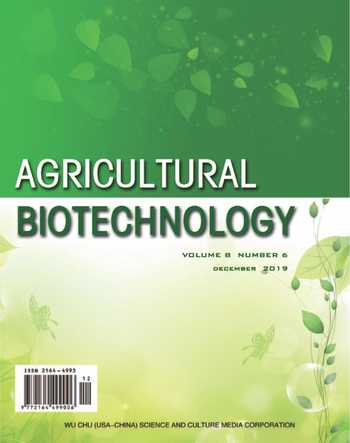Collection System of Soil Moisture Information Based on ZigBee and GPRS
Haihong LIU hao JIA Yanhe LIU Qianao ZHAO Haoyu WANG Xueming DUAN Zhaoxin ZHANG Jianjie BI
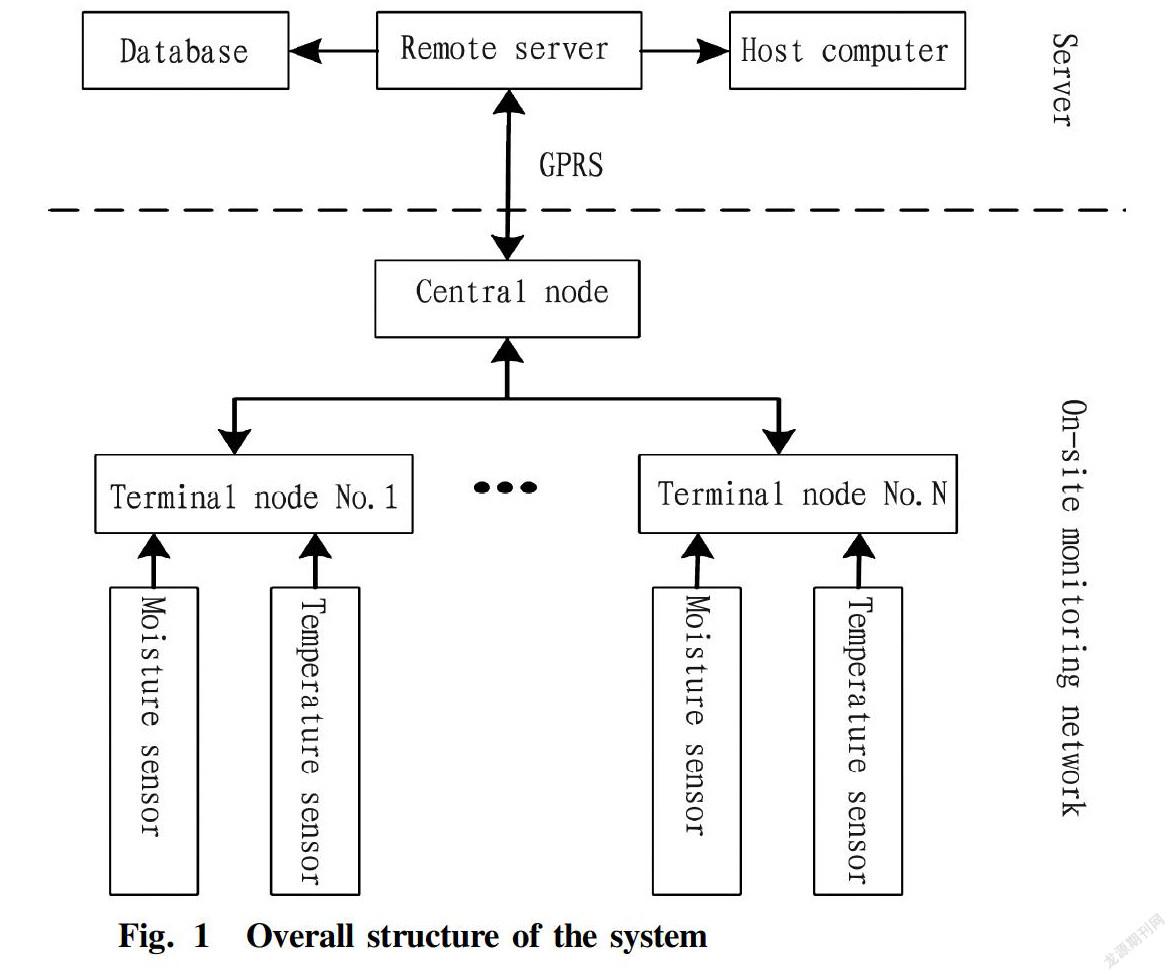
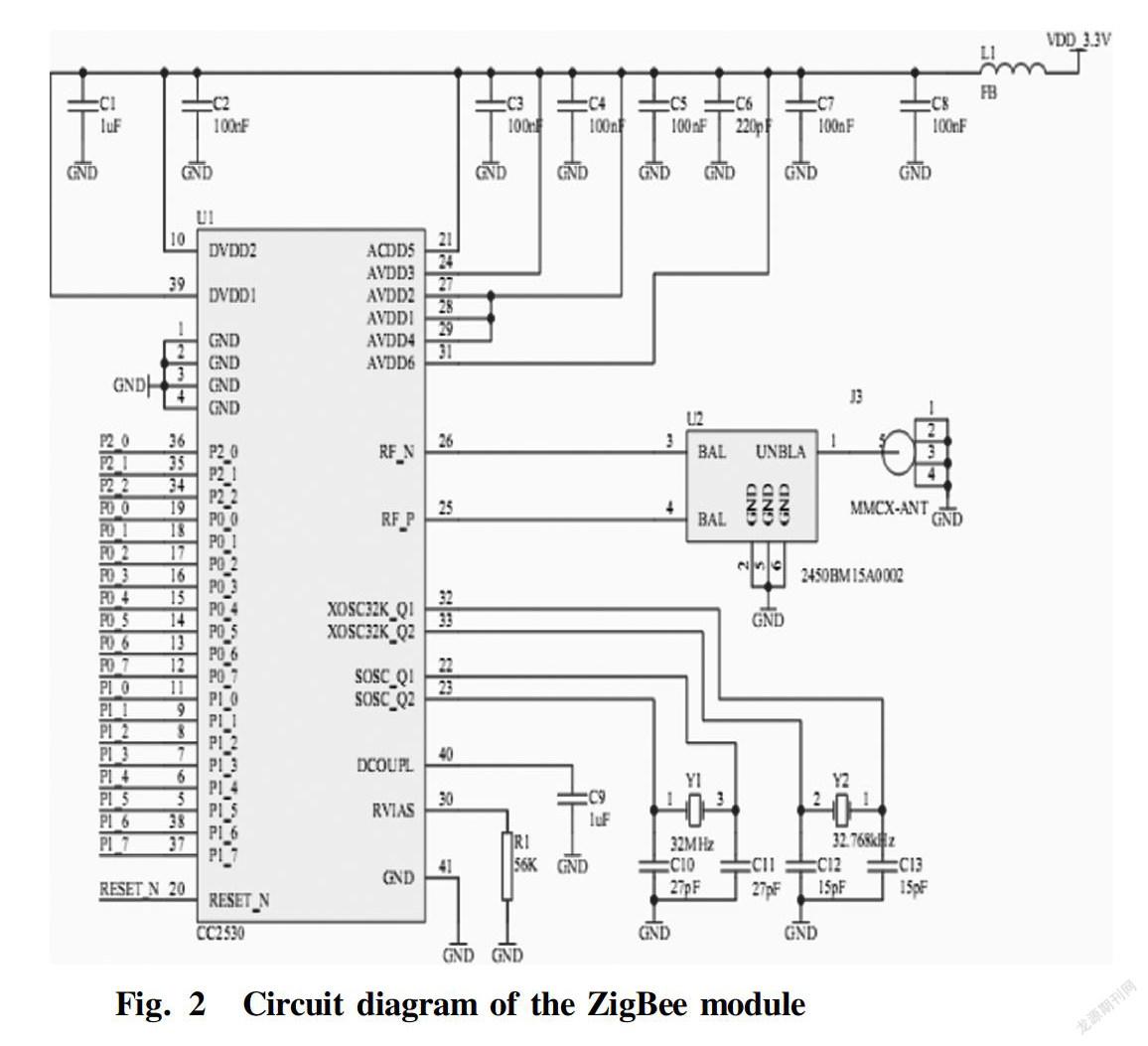
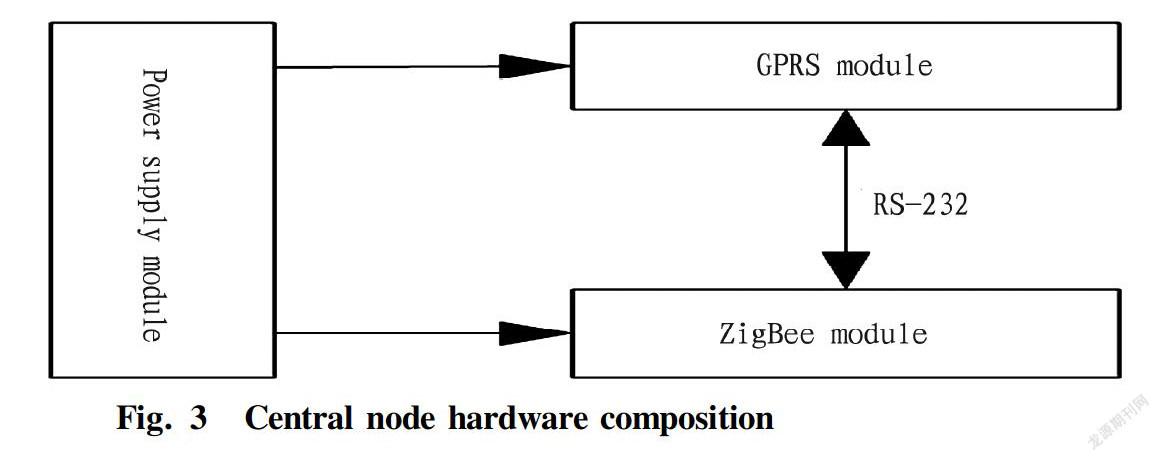
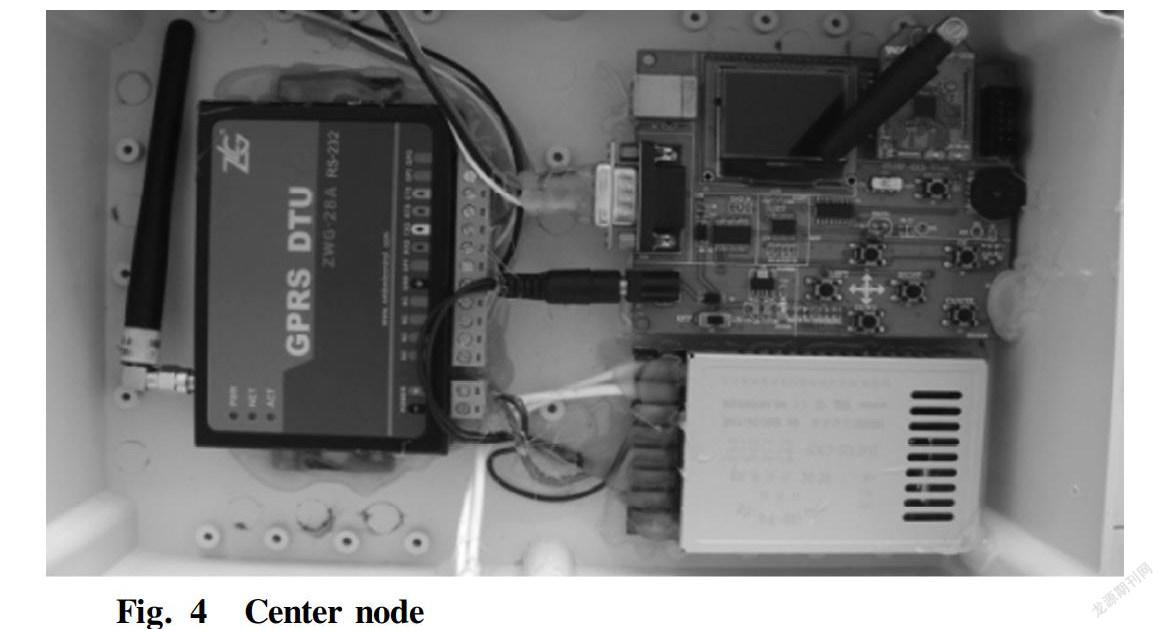
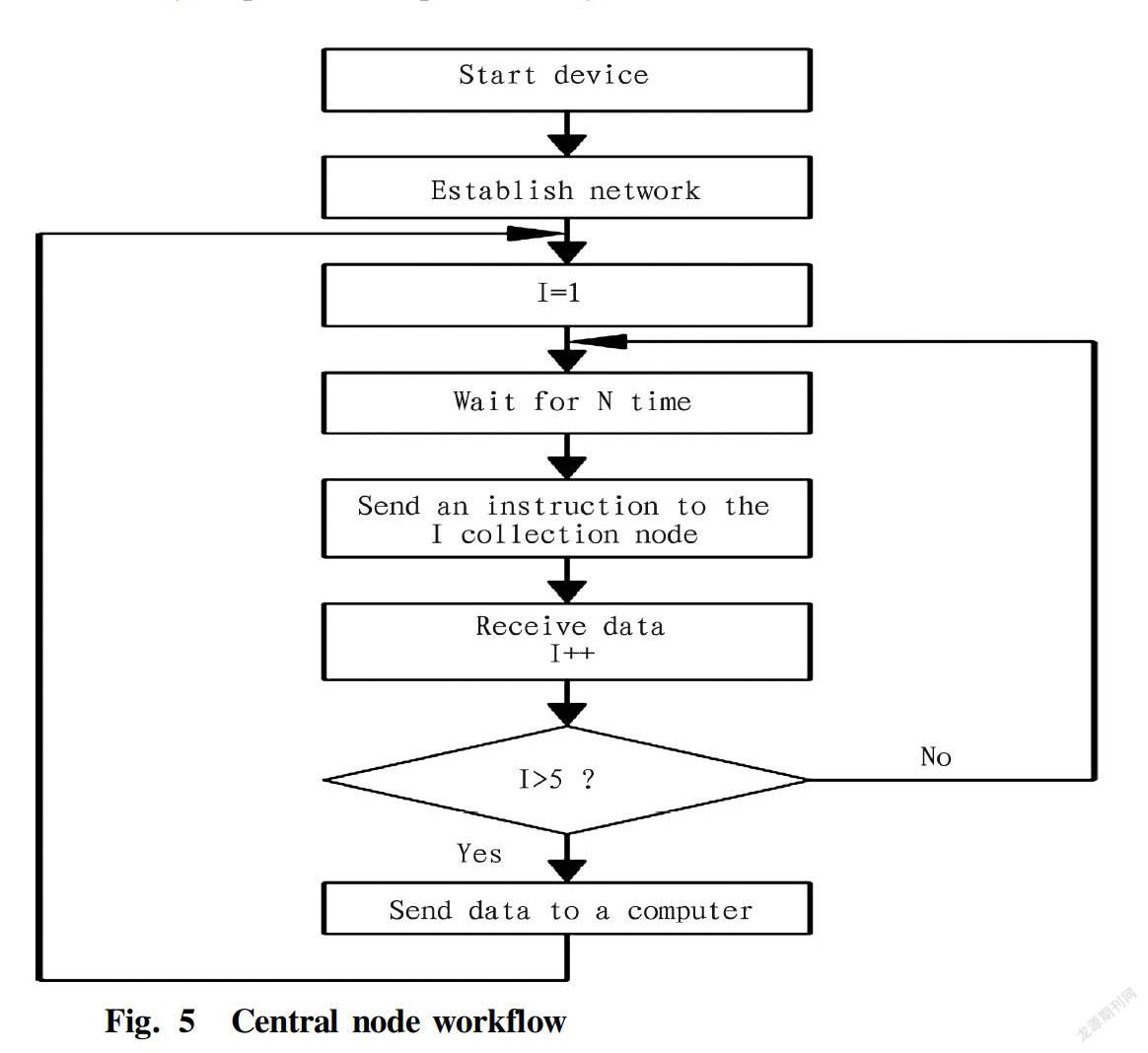

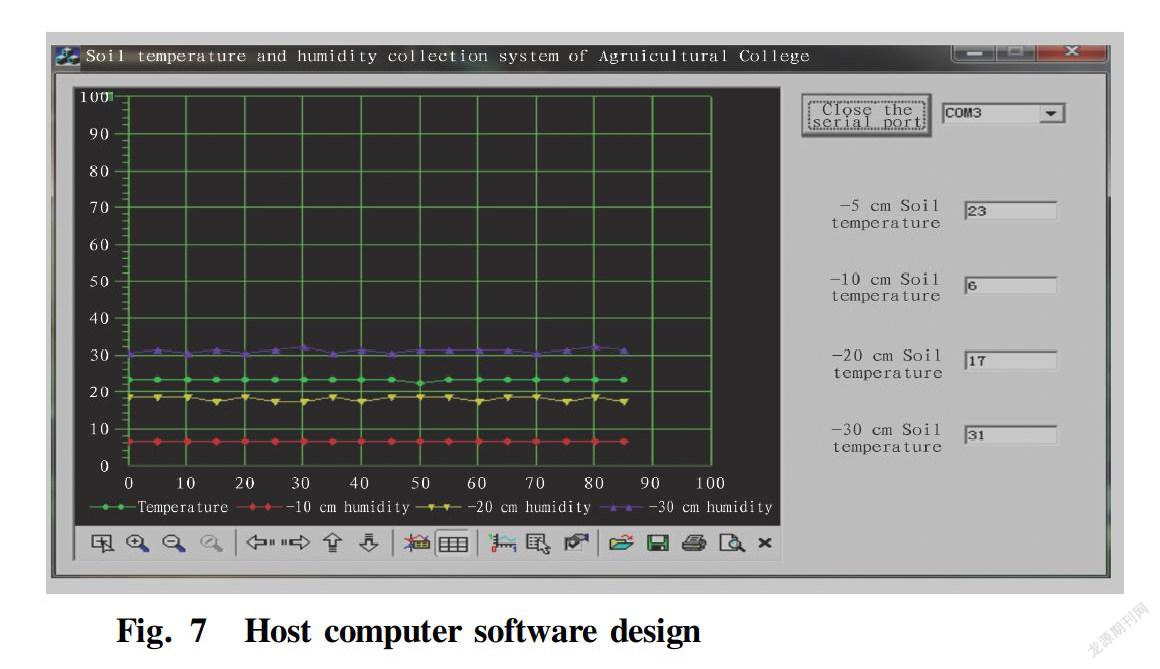

Abstract Realtime monitoring and wireless transmission of farmland soil moisture have been paid with more and more attention in the research of agricultural drought monitoring, early warning and prevention and control technology. The hardware design and software design of soil moisture monitoring in farmland were carried out, and a monitoring system based on the principles of ZigBee and GPRS technologies was developed and applied to the actual monitoring of soil moisture in farmland. This study provides a good idea to promote realtime monitoring, wireless transmission and intelligent management of soil moisture in farmland.
Key words Farmland; Soil moisture; ZigBee technology; GPRS technology; Database
Received: July 12, 2019Accepted: October 29, 2019
Supported by Special Scientific Research Fund of Meteorology in the Public Welfare Profession of China (GYHY20130604605).
Haihong LIU (1965-), female, P. R. China, engineer, devoted to research about agricultural drought.
*Corresponding author. Email: jianjieb@126.com.
Sensor technology, communication technology and computer technology are the three foundations of modern information technology, which complete the collection, transmission and processing of information. Wireless sensor networks combine the three technologies to achieve true unification of information collection, transmission, and processing. At present, wireless sensor network technology, as a new information acquisition and processing technology, has become a research hotspot due to its low power consumption, low cost and high reliability, and has been widely used. In environmental monitoring and forecasting, wireless sensor networks can be used to monitor the environment in which crops are irrigated. With the abnormal changes in global climate, drought frequently occur, which has a huge impact on agricultural production. Soil moisture monitoring is a basic, technical and public welfare work, and monitoring and forecasting soil moisture in a certain range in real time and formulating regional water transfer and distribution plan and irrigation plan according to this is an important meansfor prevention and control of drought. Doing a good job in soil moisture monitoring and giving full play to the timeliness of soil moisture monitoring provide a basis for timely guidance of important agricultural activities.
At present, most of Chinas regions are still in the stage of artificially monitoring the meteorological environment of farmland. If the temperature and soil moisture information in farmland cannot be accurately and timely grasped, it may lead to the reduction of crops in farmland due to drought. With the continuous development of Chinas economy, modern farmland management tends to be largescale and centralized, and we need timely and accurate access to farmland soil moisture. However, artificial monitoring of soil moisture can no longer meet the needs of modern agricultural development. Therefore, it is necessary to apply modern technology to realize realtime collection of farmland soil moisture information, and then send the collected data to the server of the monitoring center for processing. Due to the scattered distribution points and wide distribution range, data transmission can be performed wirelessly.
Technical Selection
Selection of soil moisture determination method
There are many methods for determining soil water content, which are summarized as follows: mainly drying method, neutron probe method, γray method, soil moisture sensor method (TDR), frequency domain reflectometry (FDR) and time domain reflectometry (TDR) method. Each of these determination methods has advantages and disadvantages.
Among the many methods for determining soil water content, the drying method is simple and straightforward, but the measurement does not have continuity. And the sampling will interfere with the continuity of soil moisture in the field. The sampling holes left in the field will cut off some roots of the crop and affect the soil water movement. The neutron probe method can periodically and repeatedly measure soil moisture at different depths in the field, without destroying the soil, but the vertical resolution of the instrument is poor, the surface measurement is difficult, and the radiation is harmful to health. The γ ray method has many advantages the same as the neutron probe method, and has higher vertical resolution than the neutron probe method, but γ rays also endanger human health. The accuracy of the sensor method for determining soil moisture is affected by the design and process manufacturing of sensors, and is still in the further development stage. Among them, the frequency domain reflectometry method and the time domain reflectometry method are now the most commonly used. They both have the advantages of mature technology, high precision and portability. Compared with TDR, FDR has more unique advantages in moisture determination due to its high stability, less influence from salt, less power consumption, less cable length limitation, continuous insitu measurement and no radiation. Therefore, in modern soil moisture monitoring, we use the frequency domain reflection method.
Selection of communication technology
The traditional field environment monitoring system is based on wired communication. There are a series of problems such as inflexible sensor deployment, complicated wiring and difficult maintenance. It is not convenient to observe multiple monitoring points in the field at the same time. With the development of wireless communication technology and embedded technology, WiFi, Bluetooth, ZigBee and other wireless communication technologies have emerged, providing an opportunity for highquality field environment monitoring. WirFidelity (WiFi) is a technology that can connect terminals such as personal computers and handheld devices wirelessly. It is a shortrange wireless technology used in offices and homes, which is not suitable for building wireless sensor network. Bluetooth is a radio technology that supports shortrange communication, enabling wireless information exchange among such as PDAs, mobile phones, laptops, wireless headsets and related peripherals. Because the Bluetooth technology has large power consumption, close communication distance (usually within 10 m), and small network size, it is not suitable for building a wireless sensor network. ZigBee is an emerging shortrange, lowpower, lowcomplexity, lowdatarate and lowcost wireless network technology. It is a technical proposal between wireless tagging technology and Bluetooth, which is widely used in automatic control and remote control field.
Considering the characteristics of WiFi, Bluetooth and ZigBee technologies, as well as the actual needs of monitoring systems, ZigBee technology is finally chosen to build a wireless sensor network.
Selection of remote data transmission technology
In order to obtain realtime data of environmental factors and other related factors in a monitoring area, the monitoring system needs to send the collected data to the user in time, while the monitoring equipment is installed outdoors, far away from the user, and needs to transmit data through a remote data transmission device from the monitoring area to the user server. At present, commonly used remote data transmission technologies include 3G technology and GPRS technology. GPRS technology, or general packet radio service technology, is a mobile data service available to GSM mobile phone users. It has the characteristics of fast data transmission, always online, and charging by traffic.
Technical Scheme
In order to realize realtime monitoring of soil moisture in farmland, the technical scheme adopted by the utility model was designed as below. A ZigBee wireless sensor network system forms a network automatically, in which soil moisture sensors and temperature sensors connected by multiple ZigBee terminal devices are used to accurately collect the temperature and humidity information of the farmland soil, and the collected data are sent to a ZigBee network coordinator; the ZigBee network coordinator is connected to a GPRS module and transmits the data to the GPRS module; and the GPRS data terminal transmits the data to the terminal database to form a good humanmachine interface, thereby realizing realtime observation of farmland meteorological information.
The scheme includes a ZigBee wireless sensor network, a GPRS data terminal, a mobile/connection base station, an Internet data server and a terminal database. Each wireless sensor network node sends the monitored parameter information to the central node, and then the central node packages the information and sent it to the server through GPRS. The server processes and judges the data, deletes the error information and retains the valid information, finally completing monitoring of soil moisture of the farmland. The overall structure of the system is shown in Fig. 1.
Hardware design
Acquisition node hardware design
The acquisition node is composed of a ZigBee module, a power supply module, a currentvoltage conversion module, an AD conversion module, a reference voltage chip, a DCDC module, and various types of sensors.
Sensors
A temperature and humidity sensor refers to equipment or a device that can convert the temperature and humidity quantities into an electrical signal that is easily measured and processed. Temperature and humidity sensors on the market generally measure temperature and relative humidity.
ZigBee module
ZigBee is an emerging shortrange, lowcomplexity, lowpower, lowdatarate and lowcost wireless network technology. It is a technical proposal between wireless tag technology and Bluetooth, and is mainly used for shortrange wireless connection. ZigBee can use three frequency bands, namely 2.4 GHz ISM band, Europe 868MHz band and US 915MHz band. The available channels are 16, 1 and 10. The circuit diagram of the ZigBee module is shown in Fig. 2.
Central node hardware design
The central node is composed of a ZigBee module, a GPRS module, and a power supply module. The ZigBee module of the central node only serves as a wireless data transmission module, and sends an instruction to the collection node and receives the data sent by the collection node; the GPRS module transmits the data received by the central node to the remote server; and the power supply module provides power for the ZigBee module and the GPRS module. Fig. 3 shows the hardware composition of the central node, and Fig.4 shows the picture of central node.
Agricultural Biotechnology2019
Software design
ZigBee program design
The development environment for the ZigBee program is IAR Embedded Workbench from IAR Systems, and the version is EW8051EV7.51. IAR Embedded Workbench is a very effective integrated development environment (IDE), which includes following tools: IAR AVR C/C++ compiler, AVR IAR assembler, general IAR XLINK Linker, IAR XAR library creator and IAR XLIB Librarian, a project manager, an editor, and IAR CSPY debugger. The IAR Embedded Workbench is suitable for a large number of 8bit, 16bit and 32bit microcontrollers and microprocessors, providing users with an excellent development environment that can effectively improve user productivity and save work time.
Host computer software design
The host computer software is developed using VC++6.0. The host computer software has functions of data display, data analysis and command feedback, data storage, etc. Data display: The host computer software interprets the data sent from each wireless sensor network and displays it on the software interface for direct observation. Data analysis and command feedback: The trend of data changes is shown by graph, and its role is that we can judge the situation in the future according to the recent trend, and then send instructions to each wireless sensor network to enter the corresponding working status. Data storage: The host computer software will save all the data to the database for later query. The software interface is shown in Fig. 7.
Database design
The database uses the SQL Server 2005 database. SQL Server 2005 is a comprehensive database platform that provides enterpriseclass data management using integrated business intelligence (BI) tools.
Application
The system includes an onsite monitoring network and a remote server. The onsite monitoring network consists of a central node and several (at least one) terminal nodes. Each terminal node consists of a Zigbee module (started as a router or terminal node) and several soil moisture sensors. Its function is to collect the soil moisture content by the carried sensor and then send it to the central node wirelessly. The central node consists of a Zigbee module (started as a coordinator) and a GPRS module. Its function is to integrate the data collected by each terminal node, rearrange and pack the data, and send it to the remote server via GPRS.
Conclusions
The system performs wireless data transmission between various nodes, which has the advantages of low power consumption, low cost, free deployment, and flexible expansion compared with the traditional wired transmission mode. The test shows that the system works stably and reliably, and the data loss rate is low, so it can be widely applied to farmland drought monitoring business.
References
[1] WANG FJ, LIU JD, WANG Y, et al. Farmland environmental meteorological information acquisition system based on Zigbee and GPRS[P]. State Intellectual Property Office of China, 2014.03.31. (in Chinese)
[2] BI JJ, LIU JD, LI YH, et al. Intelligent heating system based on Zigbee and GPRS[P]. State Intellectual Property Office of China, 2013.12.18. (in Chinese)
[3] LAN P, FANG YY, BI JJ. New greenhouse intelligent monitoring system based on Zigbee[P]. State Intellectual Property Office of China, 2016.08.17. (in Chinese)
[4] DENG LJ. Comparative study on application of soil moisture monitoring techniques[J]. New Business Weekly, 2018(20): 236-237. (in Chinese)
[5] LI L, ZHANG ZZ, WANG YY. The calibration of the New FDR system and application in soil moisture monitoring[J]. China Rural Water and Hydropower, 2018, 24(4): 50-54. (in Chinese)
- 农业生物技术(英文版)的其它文章
- Observation on Cardiac Opening of the Inferior Vena Cava in Goat Fetuses
- Evaluation on Application and Spraying Effect of AirAssisted Sprayer in Apple Orchard with Dwarfing Rootstocks
- Problems in the Development of Traditional Chinese Medicinal Materials Planting Industry in Shiyan City and Countermeasures
- Study on Practical Mature Age of Individual Pinus thunbergii×P. densiflora
- Effects of Different Densityreducing Methods on Canopy Microenvironment, Tree Growth and Fruit Quality in Closed Apple Orchard
- Development of Whole Potato Flour Fish Noodles

